GyeongGi Cultural Foundation
New Artworks by 8 Artists You Can Meet Online
■ Exhibition Summary ◦ Exhibition Name: 2020 GyeongGi Creation Center Creative Residency Exhibition 《0-Person Perspective》 ◦ Exhibition Period: 2020. 10. 22. ~ Anytime online ◦ Venue: GyeongGi Creation Center homepage and YouTube channel (online video) [Go To Page] ◦ Online Channel: GyeongGi Creation Center YouTube channel [Go To Page] ◦ Participating Artists Soona Kim, Youngkoo Kim, Hyegi Min, Kwantaek Park, Soyoung Park, Hyundoo Chung, Sunkyung Cho, Hyuntaek Cho ◦ Organizer: Choah Bang (curator, GyeongGi Creation Center) ◦ Organizer and Supervision: (Re)GyeongGi Cultural Foundation GyeongGi Creation Center |
GyeongGi Cultural Foundation GyeongGi Creation Center (Cultural and Arts Headquarters Hongmi Joo) will be releasing the 2020 Creative Residency Resident Artist's exhibition 《0-Person Perspective》 from October 22 (Thursday) on the website and official YouTube channel.
《0-Person Perspective》, which showcases the new works of eight artists in the 2020 GyeongGi Creation Center, is an exhibition about the possibility outside of one central view, and a new dimension of spatiality that it will bring about.
Throughout this year's pandemic, the physical spaces where contact occurs, as well as the social structures and the foundations that support society, such as religious beliefs, are subject to doubt and vigilance. In the reality of wandering online platforms to temporarily forget the anxiety and tension triggered by the virus, the meaning of space has become even more special.
The work of the participating artists suggests that a spatial proposal of another dimension to experience the present will be possible. When ‘where something exists’ is viewed as a space beyond the division of online and offline, the exhibited works create a non-specific space in which the viewer's consciousness is located. For example, ‘a space that traces the abyss of consciousness with a black trace or resonance of sound waves, a space as a social domain exposed through the iconography of religions, strangers, and cities, a space on a plane containing a pictorial world, and a variable through the movement of objects and bodies In various experiments by artists such as ‘a space to do', you discover spatial aspects that go beyond a fixed frame. The possibility of a new ‘0-Person Perspective’ in the works of this exhibition, which has been shown online to prevent the spread of COVID-19, is expected.
On the other hand, you can check the collection of materials for the exhibition through video on the website of GyeongGi Creation Center after November 6th. The material book, which will be produced in a form optimized online instead of in print, contains the comments of two critics for each entry, which will help to understand a variety of works.
※ GyeongGi Creation Center is an art residency that supports the creation and research activities of domestic and foreign artists. It operates exhibitions that reflect contemporary issues and art trends, support projects for artists, and exchange programs at home and abroad.
■ Artist Notes
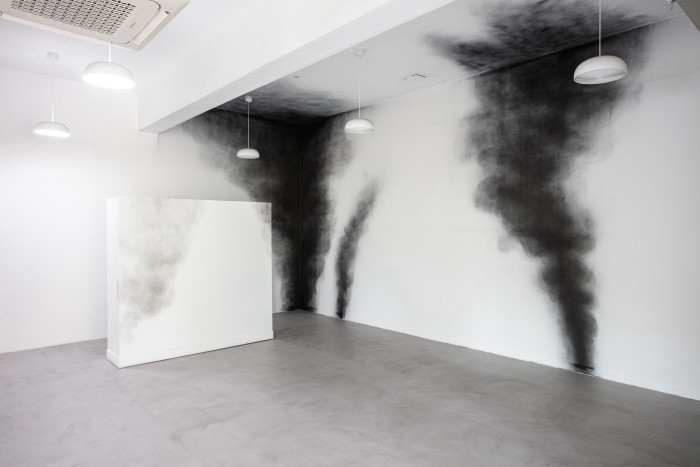
▲ [Photo] Soona Kim, Untitled, 2020, Ink, Variable Installation
I try to create an image of soot on the walls of the exhibition hall. Soot is a trace caused by fire, and it is usually an image that can be seen at the site of an unexpected accident, not ordinary daily life. Also, since fire chemically changes something, the object or space that has undergone such an event is often unable to return to its previous state. So, the image of soot in itself causes us a vague sense of fear. In the exhibition space, I would like to create an ambiguous fear of phenomena/events that surround us but cannot clearly analyze or cope with where and how they began.
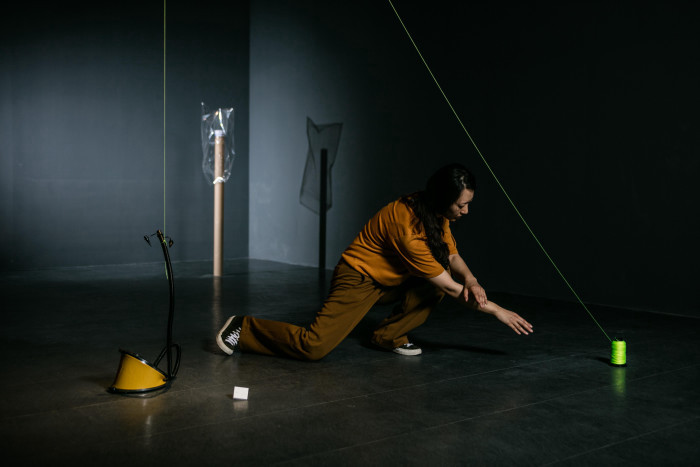
▲ [Photo] Sunkyung Cho & Kwantaek Park, L’incontro, 2020, variable installation, performance (cooperative project)
The collaboration between Sunkyung Cho, who has been choreographed through the body as a medium, and Kwantaek Park, who has designed a space that activates the various senses of the audience, is a common element of the two genres of dance and art, at two points of contact: ‘body' and ‘space'. depart. In their creative process, the two discovered similar concerns of the intervention and exclusion of ‘self-nature', and through this collaborative process, the two tried to test the relationship between the structure of the subjective movement using the body and the physical conditions under which such movement inevitably appears. do. The work to be presented at the GyeongGi Creation Center exhibition is the first meeting, and attempts to communicate between body language and visual language using the concept of score.
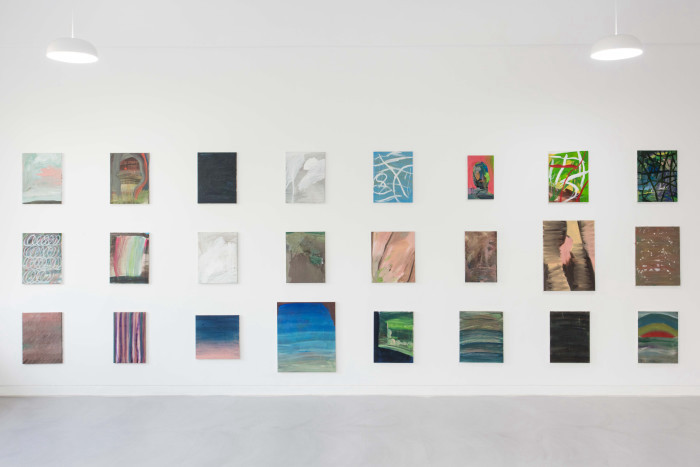
▲ [Photo] Hyundoo Chung, '2019. 10. 30.-2020. 09. 11.’ series, 2020, oil on canvas, variable installation
Various experiences that cannot be encountered in reality, such as images of landscapes and landscapes experienced in everyday life, sensations generated through work, and body trajectories, are translated into paintings and have pictorial properties. Beings with pictorial materiality create pictorial stories different from their original meaning. I try to understand the relationship between my paintings and the experiences underlying them. Through this, I try to understand myself and the world again.
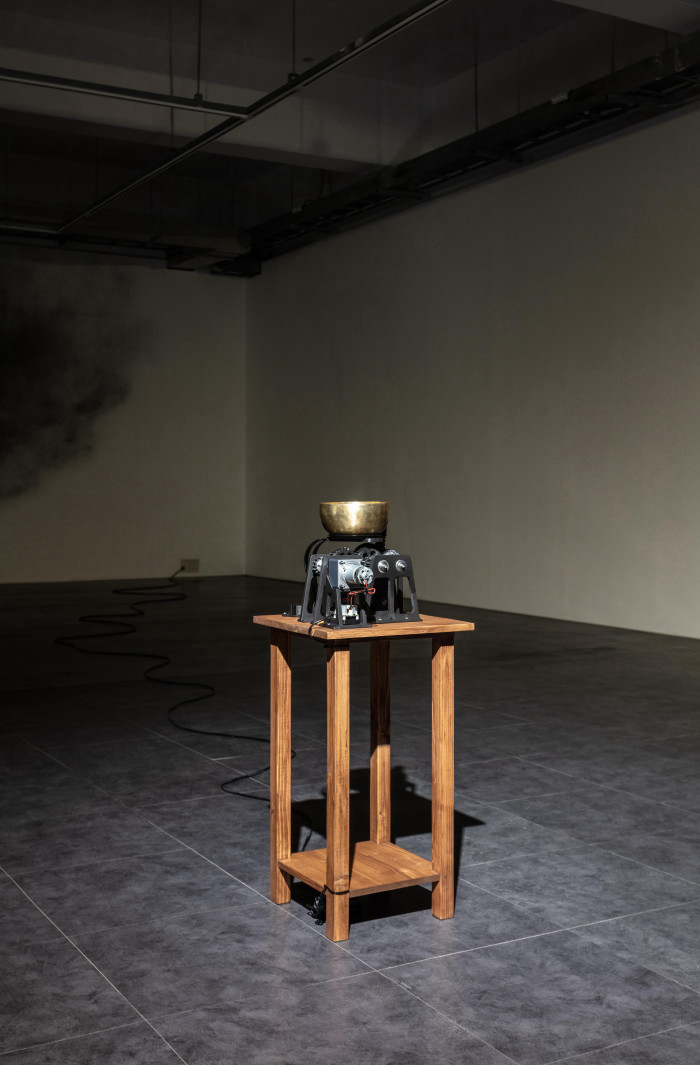
▲[Photo] Hyegi Min, Void, 2020, mixed media, variable installation
Certain sounds bring moments that you cannot physically experience. This is because sound is the vibration that makes the most immediate sense of the flow of time and space, and these vibrations evoke different oneself according to individual memories and experiences. <Void> fills the exhibition hall with the vibrating sound of motors and metal bowls, and mechanical noise through a machine that keeps hitting a metal bowl. A machine that repeatedly knocks a metal bowl in the dark, with or without an audience, resembles an investigator.
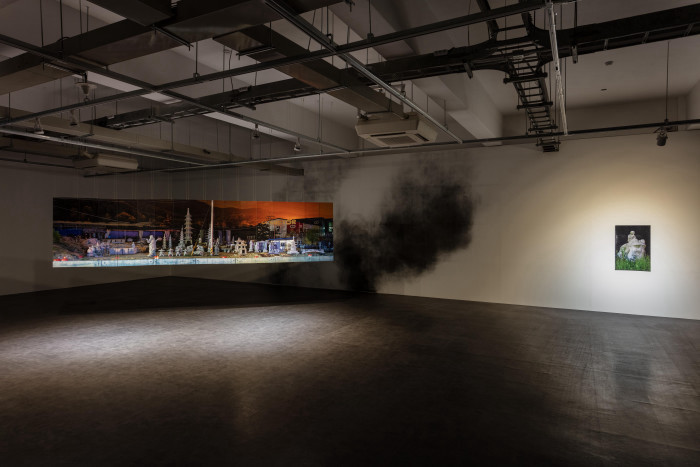
▲[Photo] Hyuntaek Cho, Stone Market, Pocheon, 2020, inkjet print, metal plate, 120cm×480sec
Recently, I am photographing the night scenery of the stone statue. In the early days of my work in Busan, filming started late at night and continued until early dawn. I saw a grandmother who passed by me, who was taking pictures enthusiastically, standing together for a while in front of the Buddha statue. The moment I stopped shooting and looked at it, I thought I was taking pictures of a sacred object disrespectfully. After a while, when I woke up and looked around, the taxis were still noisy passing, the bus starting the first car, the countless pieces of stone placed out of context, the flashy signs that were lit all night, the situation in reality was once again the first market. . Like a clothing store waiting for customers with clothes on a mannequin, wave your arms constantly, come on! Like a beckoning air puppet, numerous types of symbols are lined up for customers with different tastes. Sometimes there is a statue of the Holy Mother standing next to the Buddha statue, and there are also statues of the Twelve. It's like, "I don't know what to like, so I prepared various things." It seems to be. We see the religion and faith of our time in the stone market. It feels like I'm seeing a market barrel that has become a mess between countless industrial products that appear and disappear like fashion and people who are sobbing like ghosts.
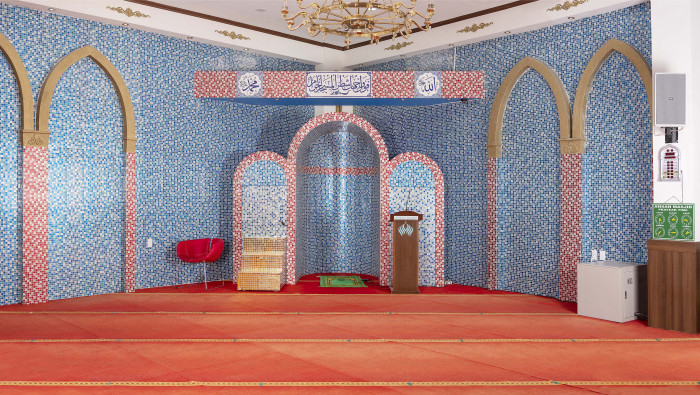
▲[Photo] Soyoung Park, ‘Northwest 285°’ series, 2020, archival pigment print, variable installation
This is a photograph of a mosque in which unfamiliar interior decoration, culture, and language have evolved to suit the domestic situation. Muslims pray for about 285 degrees northwest from Korea, according to the culture of praying for Mecca, the holy land. While accessing only unilateral news about Muslims through the media, this place has become a space that transcends places for those who have moved to Korea from all over the world.

▲[Photo] Youngkoo Kim, Private Island, 2020, acrylic on canvas, variable installation
The Island of Thinking is closely related to the life of modern people. Geographically real islands give geopolitical experiences, are at the opposite point of the city's comfort and convenience, and are at the border of severance and isolation, paradoxically thinking about the connection and openness we have forgotten. On the other hand, an island that does not actually exist is an aesthetic object that embodies the fundamental emotion of the human mind and is related not only to the extremely personal mental history that begins at the boundary between isolation and solitude, but also to a common perception system. The island allows us to reflect on human emotions through spatial location or geopolitical experience.
For more information, please visit the GyeongGi Creation Center website. |
<Copyright(c)2002 GGC All rights reserved.>
- Writer
- GyeongGi Cultural Foundation
- About
- Everything about the GyeongGi arts and culture, GGCF
- homepage
- https://www.ggcf.kr/